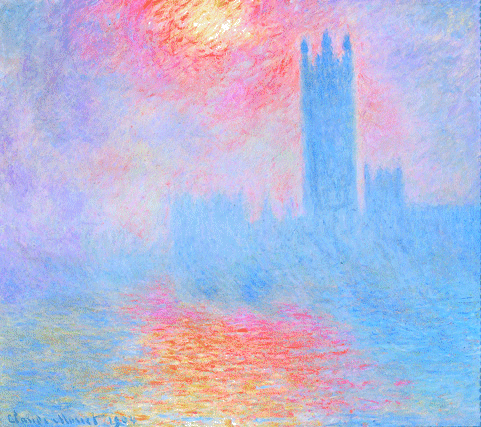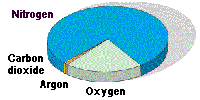 
|
AIR AND
HEALTH
Introduction
|

Pollutants in the air can create smog(1) and acid rain, cause respiratory or other serious
health illnesses, damage the protective ozone layer in the upper
atmosphere, and contribute to climate change. Air pollutants can
be particularly harmful to people belonging to high - risks
groups such as children and the elderly.
It is estimated that 30 - 40% of Europeans living in cities are
exposed to average concentrations of air pollutants such as
sulphur dioxide and nitrogen dioxide that are above WHO or
European Union (EU) guidelines (EEA, 1997). However, not everyone
who lives in such areas will have health problems. Level, extent,
and duration of exposure, age, individual susceptibility, and
other factors play a significant role in determining whether or
not someone will experience pollution-related health problems.
Air pollution is a general term used to describe the mixture of
substances that are naturally or artificially introduced into the
air. The most well-documented of these substances (and those
usually monitored on a routine basis) include sulphur dioxide
(SO2), nitrogen oxides (NOx, including NO and NO2), carbon
monoxide (CO), ozone (O3), lead (Pb), and total suspended
particles (TSP) also known as suspended particulate matter (SPM)
or black smoke (BS).
| The air we breathe |
| An active
person inhales 10,000-20,000 litres of air each day -
about 7-14 litres per minute, although a person taking
strenuous physical exercise (e.g. jogging) may inhale up
to 50 litres of air per minute. A 3 year old child at
rest inhales twice as much air per unit body weight than
an adult; thus as their airways are narrower, and their
lungs still developing, problems as a result of breathing
in pollutants are likely to be more serious and longer
lasting.  Air
composition Air
composition
Air is a mixture of gases in the lower atmosphere.
Dry air at sea level is composed in volume of nitrogen
(78.08%), oxygen (20.95%), argon
(0.93%), carbon dioxide (0.03%), together with
very small amounts of other gases. Water vapour is
found in variable concentrations.
|
The major sources of these pollutants are the combustion of
fossil fuels (for energy generation, industrial processes and
transportation), and of solid fuels, such as coal and wood, for
domestic purposes. Air pollution is different from other forms of
pollution in that, once the pollutants are in the air, exposure
cannot be easily avoided. If high levels of outdoor air pollution
are occurring in a city, it may be expected that a large
proportion of the population will be exposed.
Levels of air pollution may vary markedly even at the local
level, especially in the case of ground-level emissions (e.g.
from road transport). Short-term variations in pollution levels
will also occur due to variations in emission activity. The level
of total human exposure will vary depending on the proportion of
time one spends outdoors, the ability of the individual
pollutants to enter the indoor environment and the levels of
pollutants generated indoors from cookers, paints, furnishings
and building materials. Most people spend a much larger
proportion of their life indoors than outdoors. Therefore indoor
air pollution is a significant public health problem, especially
for children.
(1) smog= smoke and fog




Document Actions
Share with others